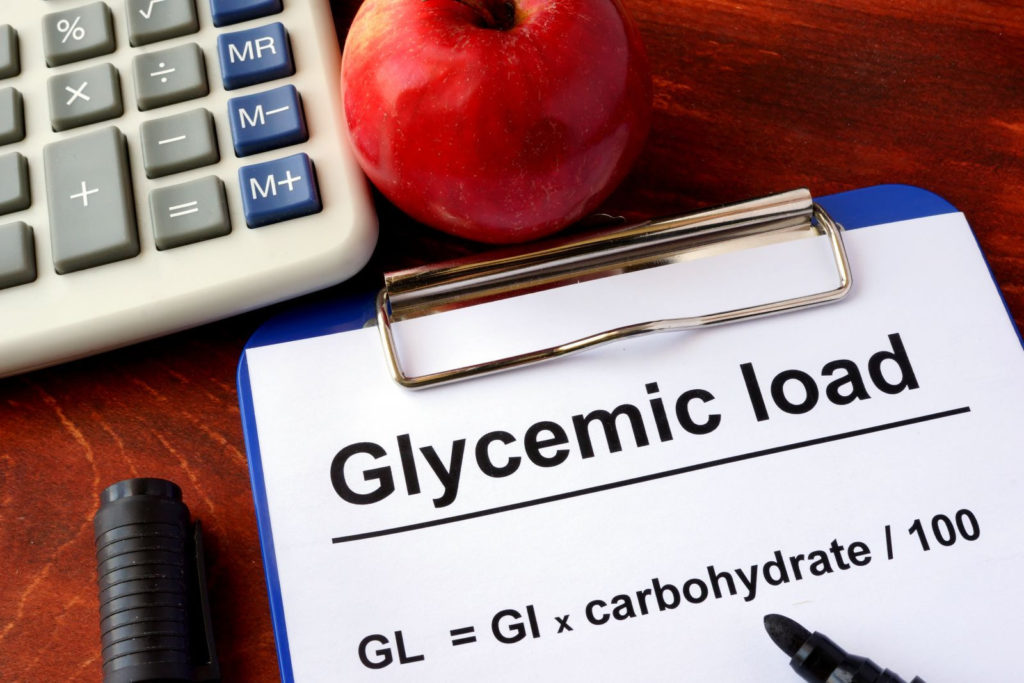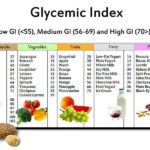Contents
What Is Glycemic Load?
The Glycemic Load or GL is a number or value of the food that estimates how that food and the amount of it will raise a person’s glucose level after eating it. It accounts for how much carbohydrate is in the food and how much each gram of carbohydrate in the food raises blood glucose levels. Glycemic Load is based on the Glycemic Index (GI).
According to the University of Sidney, food items are named as low, medium, or high glycemic load foods positioned from 0 to 20 and above. The categories are as follows:
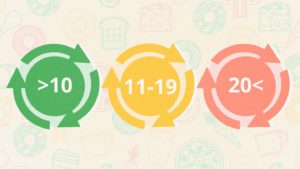
- Low Glycemic Load (low GL): 0 to 10
- Medium Glycemic load (med GL): 11 to 19
- High Glycemic load (high GL): 20 and over.
Glycemic Index (GI) and Glycemic Load (GL)
The rate at which food sources raise blood sugar levels relies upon three factors: the types of carbs they contain, their supplement structure, and the sum you eat. In any case, the GI is a relative measure that doesn’t consider the measure of food eaten.
Glycemic Index (GI) is just the value given to the food items based on their ability to get absorbed and raise the blood glucose levels in the body. It’s frequently condemned, therefore. To settle this, the glycemic load (GL) rating was created. The GL is a proportion of how a carb influences blood sugar levels, taking both the sort (GI) and amount (grams per serving) into account.
The GI is fixed for every food item. Whereas the GL of food is dependent on GI as well as the amount of carbohydrate the food has. The higher the GI, the more quickly it will raise the blood sugar levels in the body. So it is always advisable for people with high blood sugar to eat food with a low glycemic index.
The glycemic index of good ranges from 1 to 100. And the food items are divided into three categories, low, medium, and high on the basis of their glycemic index.
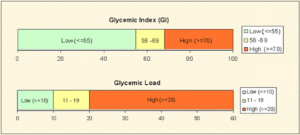
Difference Between GI And GL
| Glycemic Index (GI) | Glycemic Load (GL) |
| Ranks carb-rich foods based on immediate blood glucose response | Anticipates a blood glucose response to a specific amount of carbohydrate |
| Measures carbohydrate quality | Measures carbohydrate quality or quantity of food |
| Low GI food (<=55); Medium GI food (56-69); High GL food (>=70) | Low GL food (<=10); Medium GL food (11-19); High GI food (>=20) |
How Is Glycemic Load Calculated?
The following formula is used for calculating Glycemic load (GL):

For this, you need to know certain things such as:
- The Glycemic Index of the food you chose to eat.
- The exact quantity of the food you are going to eat
- The number of carbohydrates in that food.
For example: What can be a Glycemic Load of a 1 cup diced watermelon?
So, the glycemic index of watermelon is 72 and one cup of diced watermelon contains 11 grams of carbohydrates.
According to the formula of GL, 1 cup of watermelon has (11×72)/100=7.92 Glycemic load.
How Useful Is Glycemic Load?
For people with diabetes, glycemic load plays a very vital role in their diet planning. However, calculating Glycemic load may not be practical and simple for everyone, with time you may start getting the calculations correct and find this tool to be extremely helpful. Choosing not just the foods, but also the right of it will become easy for those struggling with their high blood sugar levels (hyperglycemia).
When you continue having a specific meal, or you often have a particular meal, then assessing the Glycemic Load can be useful. Or even if you are thinking of trying a new meal and are skeptical on whether to start it or not, assessing Glycemic load would tell you where the meal is going to land your blood glucose levels.
To know the effect of a particular meal on your blood glucose levels, you can test the blood glucose before having a meal, and then test 2 hours after eating, and then again 4 hours after eating.
Medical Conditions and Glycemic Load
Glycemic Load is interrelated to various health conditions. Some of them are:
- Heart Disease: The Nurse’s Health Study looked at over 75,000 healthy and middle-aged women to find out the impact of carbohydrate consumption on heart and vessel health. It was found that diets with a high GL value increase the risk of heart disease. Particularly, women with overweight were seen with a strong association between dietary GL and cardiovascular disease.
- Postmenopausal conditions: A study said that dietary GL was inversely related to the level of good cholesterol (HDL) and directly related to bad cholesterols such as LDL and triglycerides.
- Diabetes: Some studies have shown that people with diabetes if follow a low glycemic index and glycemic load have shown a lower rise in their blood sugar levels. Raised dietary glycemic index and glycemic load increases insulin resistance
Glycemic Load And Metabolism
The GL is the extended version of GI and tells a lot more about the food you are going to consume. Carbohydrate content changes in terms of quantity and quality in various foods. Comparing GI values of foods having different carbohydrate densities will tell us that how foods with high GI can be consumed in a healthy manner. And it will not affect your metabolism as well.
If you take a baked potato, it comes under the category of medium to high GI and this dumps the potato in the list of foods to avoid, or at least eat less. Watermelon also has a high GI. But the carbohydrate content in the served watermelon is low. Rather, watermelon contains high levels of water.
For example, if you take 100gs of watermelon, it would not contains carbs more than 5g. And this will give watermelon a low GL value. On the other hand, a potato has a lot more carbohydrates, and therefore its GL value too is high.
So it is right to say that a serving of watermelon won’t impact much on blood sugar levels, as a serving of potato would do.
Factors Affecting The Glycemic Load
Glycemic Load depends on GI. So looking into various variables that impact the GI and ultimately the GL value of food includes:
- Sugar Content: There’s a misinterpretation that all sugars have a high GI. The GI of sugar goes from as low as 23 for fructose to up to 105 for maltose. In this way, the GL of food also mostly relies upon the type of sugar it contains, and also the amount of it that is being consumed.
- Starch Structure: Starch is a carb-containing two particles — amylose and amylopectin. Amylose is hard to process, while amylopectin is handily processed. Food varieties with a higher amylose substance will have a lower GI. And consume less so that it does not affect the glucose levels in your body.
- Refinement of Carbs: Handling strategies, for example, pounding and moving upset amylose and amylopectin particles, raising the GI. As a rule, the more handled a portion of food is, the higher its GI.
- Nutrient composition: Adding protein or fat to dinner can moderate assimilation and help diminish the glycemic reaction to a meal.
- Cooking technique: Arrangement and cooking strategies can influence the GL as well. For the most part, the more extended a food is prepared, the quicker its sugars will be processed and consumed, raising the GI, and hence the GL as well.
- Readiness: Unripe natural product contains complex carbs that separate into sugars as the organic product ripens. The riper the natural product, the higher its GI. For instance, an unripe banana has a GI of 30, while an overripe banana has a GI of 48.
Glycemic Load And A Good Diet
As it’s known to you now that taking glycemic index into account is not enough while making choices about what you eat. You just cannot say that the food with low GI is perfect and healthy enough for you and you don’t get that green flag to enjoy as much as you wish to.
What else is important then? The amount of calories, vitamins, and minerals your meal plate is holding is also very important. For example, the glycemic index of potato chips is lower than that of oatmeal and is almost equal to green peas. But nutrients-wise, green peas, and oatmeal are more beneficial.
Second, comes the portion size. The quality of the food matters but the quantity of the food matters equally. Even you are having something of low GI, but in large amount, it is going to affect your blood glucose levels abruptly.
Lowering Dietary Glycemic Load
You can achieve your goal of lowering dietary GL by:
- Replacing carbs with proteins
- Eating low GI carbohydrates and avoiding high GI carbohydrate foods
- Trying to have at least 3 low GL food all through the day, with every meal.
Lower Glycemic Load Diet
Diet with lower glycemic load includes:
- More of low glycemic index food such as whole grains, legumes, nuts, fruits, and non-starchy vegetables
- Fewer foods having a high glycemic index like white rice, white bread, and potatoes
- Less of foods with sugar content such as candy, cookies, cakes, and sweet drinks.
Portion and size are very crucial. You might eat foods with having a high glycemic index. But for them to stop causing any harm to you, you need to take them in smaller portions and enjoy them.
The most effective method to follow a low glycemic diet ought to include generally low GI food sources, for example,
- Organic products: apples, berries, oranges, lemons, limes, grapefruit
- Non-starchy vegetables: broccoli, cauliflower, carrots, spinach, tomatoes
- Whole grains: quinoa, couscous, grain, buckwheat, farro, oats
- Vegetables: lentils, dark beans, chickpeas, kidney beans
Food varieties without a glycemic index value or with a low GI can likewise be delighted in as a feature of a decent low glycemic diet. They include:
- Meat: hamburger, buffalo, sheep, pork
- Fish: fish, salmon, shrimp, mackerel, anchovies, sardines
- Poultry: chicken, turkey, duck, goose
- Oils: olive oil, coconut oil, avocado oil, vegetable oil
- Nuts: almonds, macadamia nuts, pecans, pistachios
- Seeds: chia seeds, sesame seeds, hemp seeds, flax seeds
- Spices and flavours: turmeric, dark pepper, cumin, dill, basil, rosemary, cinnamon
Foods with High Glycemic Index To Avoid
Although no food sources are strictly forbidden on the eating routine, food varieties with a high GI ought to be restricted. Food sources with a high GI include:
- Bread: white bread, bagels, naan, pita bread
- Rice: white rice, jasmine rice, arborio rice
- Grains: moment oats, breakfast oats
- Pasta and noodles: lasagna, spaghetti, ravioli, macaroni, fettuccine
- Bland vegetables: pureed potatoes, potatoes, french fries
- Baked food: cake, doughnuts, treats, croissants, biscuits
- Bites: chocolate, wafers, microwave popcorn, chips, pretzels
- Sugar refreshments: pop, natural product juice, sports drinks
In a perfect world, try to use these food varieties that have a lower glycemic index at whatever point conceivable.
Glycemic Load Table
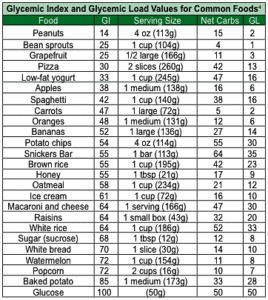
This chart helps you know the glycemic index and glycemic load of 100g portions.
A Word From MantraCare
Do you want to get rid of diabetes? Join our online diabetes consultation program and reverse your Diabetes naturally through lifestyle changes such as a Personalized Diet plan, Exercise, dieticians, and health coaches.
